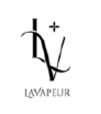- within Intellectual Property topic(s)
- in United States
- Louis Vuitton opposed the figurative mark LV LA VAPEUR in Classes 34 and 35 based on its earlier LV mark in Classes 16, 18 and 25
- The Opposition Division found that the LV sign had a
considerable reputation in the European Union for certain
goods
in Classes 18 and 25 - When encountering the contested sign, the relevant consumers
may think of Louis Vuitton's brand expansion or
business involvement in these fields
On 16 September 2024 the Opposition Division of the EUIPO issued its decision in Case Nо B 3 204 828.
Background
Louis Vuitton Malletier is the owner of registered EU, International and French trademarks for the mark depicted below (the LV sign) in Classes 16, 18 and 25:

In October 2023 Louis Vuitton opposed an EUTM application for the mark depicted below for cigarette and tobacco products in Class 34 and business and retail services in Class 35:

The opposition was grounded on both Louis Vuitton's earlier registered rights, as well as the reputation of the LV sign.
Decision
At the outset, the Opposition Division noted that, for
trademarks with a reputation (Article 8(5) of
Regulation 2017/1001), the following cumulative conditions were
required:
1. identity or similarity of the signs in question;
2. opponent's reputation prior to the filing of the contested
mark (4 July 2023) within the relevant territory and for the
goods/services being opposed; and
3. risk of injury – namely, use of the offending mark would
take unfair advantage of the reputation or be detrimental to the
opponent.
Reputation
To determine the LV sign's level of reputation, the
Opposition Division took into account the market share held by the
earlier trademark, the intensity, geographical extent and duration
of its use, as well as the size of the investment made by Louis
Vuitton in promoting it.
Louis Vuitton submitted extensive evidence to support its claim of
reputation in the LV sign, including from sources such as
Wikipedia. It also listed the 517 stores worldwide (emphasising the
stores in the EU member states) and submitted third-party
publications, such as:
- Forbes, which proclaimed that Louis Vuitton was "the world's most valuable luxury brand" in 2008;
- the BRANDZ Top 100 Most Valuable Global Brands for 2009-2012, which ranked the LV sign at No 21 in 2012, with a brand value of $25920 million; and
- rankings from Eurobrand for 2009 to 2011.
Evidence of revenue for the LVMH Group by way of quarterly figures between the period from 2016 to 2020, specifically for the"fashion and leather goods" segment, as well as the LVMH 2021 and 2022 Annual Reports, which demonstrated that 24% of the company's revenue came from Europe in 2022, were provided. Additionally, Louis Vuitton filed extensive evidence of advertising campaigns carried on between 2008 and 2020 depicting handbags bearing the LV sign, which included copies of press cuttings and excerpts from notable magazines and newspaper publications in various EU languages such as Italian (Vogue, Amica, Elle and GQ) French (eg, Le Figaro and Air France Magazine) and Spanish (eg, Elle, Hola, Cosmopolitan and Marie Claire). Numerous decisions pertaining to the LV sign from many courts in EU member states, including French, Italian, Greek and Danish courts, as well as the EUIPO and various national trademark registries, were produced. Brand recognition market surveys within the European Union were also deposited as evidence of reputation.
The Opposition Division, having assessed the evidence, agreed that the LV sign had a considerable reputation in the European Union for certain goods in Classes 18 (trunks, travelling bags, handbags, fine leather goods, namely pocket wallets and purses) and 25 (clothing for women).
Similarity of marks
The Opposition Division found the marks in question to be visually similar due to the interlacing letters 'L' and 'V' contained in both marks.
Risk of injury
To establish the existence of the risk of injury, Louis Vuitton had to demonstrate that the relevant public would establish a "mentallink" (association) between the marks, taking into account factors such as the degree of similarity between the marks and goods/services in question, and the strength of the earlier mark's reputation. The Opposition Division reasoned as follows:
"A]lthough the sectors of luxury fashion articles and fragrances and tobacco products are distant, there are some suggestions of some kind of involvement of luxury fashion houses in the manufacture, promotion or commercialisation of these products, which in any event are related to lifestyle and images of glamour, luxury and exclusivity. Therefore, when encountering the contested sign on the relevant goods in Class 34 or those that are the subject of the retail/wholesale services in Class 35, the relevant consumers may think of the opponent's brand expansion or business involvement in these fields."
It concluded that that "the contested mark is likely to take unfair advantage of the repute of the LV sign in the perception of the relevant public".
Conclusion
As all the criteria of Article 8(5) were met, the opposition was held to be well founded and the application wholly rejected.
Comment
This case demonstrates the enhanced protection offered to brand owners under Article 8(5). Registered EU trademarks or national marks from EU member states that fulfil the requirements of reputation can invoke Article 8(5), which allows protection against dissimilar goods and services. Consequently, this provision is particularly beneficial to luxury brand owners in the European Union.The case also highlights the EUIPO's recognition of brand owners' efforts to extend the brand beyond the sector for which it enjoys a reputation.
This article first appeared in WTR Daily, part of World Trademark Review, in October 2024. For further information, please go to www.worldtrademarkreview.com
The content of this article is intended to provide a general guide to the subject matter. Specialist advice should be sought about your specific circumstances.

